Sony is one of the most famous TV manufacturers and offers dozens of models in its catalog. This catalog includes OLED and Full LED TVs positioned in the mid to high-end range. The company is known for the superb picture quality and design of its TVs. Here is a selection of the best Sony TVs you can get on the market today.
Here is our commitment, to make sure that we provide the best user experience and content quality:
You can support us by using our links to make your purchases (at no extra cost to you)! This sometimes earns us a commission which allows us to remain independent. More about us
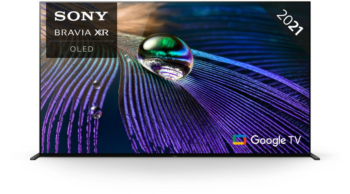
A perfectly calibrated image supported by infinite contrast thanks to the OLED screen technology: this 55-inch TV from Sony is flawless in terms of resolution, sound and ergonomics.
1 912 £ on BoulangerIt's clear that this 55-inch TV from Sony lives up to the high-end label. With a native 4K resolution of 3840 x 2160 pixels, this TV offers the infinite contrast characteristic of OLED screens, and a perfect calibration supported by a very high peak brightness. When you combine this with 178/178 viewing angles and a well-set Game Mode, you have to admit that all the elements are there for a resolution worthy of a home theater.
Moreover, this 55-inch TV from Sony includes an audio system that acts perfectly as a central speaker: the Bravia XR system in action! Compatible with game consoles, it offers a native refresh rate of 100 Hz. As for connectivity, you have enough HDMI ports with 2 in 2.1 and 2 in 2.0. Connect all your devices using the Chromecast 2 or Airplay 2 for fans of the apple brand.

Almost as good as the impressive XR-55A90J, the Sony XR-55A80J is a much more affordable 55-inch OLED TV. It displays crisp, perfectly detailed images, and handles motion very well.
1 279 £ on DartyThe Sony XR-55A80J is an excellent 4K OLED TV. It's a slightly more affordable alternative to the Sony XR-55A90J, but comes with many of the same features and performs just as amazingly. Its self-illuminating pixels have a near-infinite contrast ratio and the screen displays perfect blacks without glare. This Sony TV can deliver a satisfying HDR experience thanks to its wide color gamut.
The Sony XR-55A80J is a TV designed for mixed use. It works well in dark rooms, whether for watching movies or gaming; especially since the response time is almost instantaneous and the input lag is very low. Unfortunately, its announced variable refresh rate (VRR) support has not yet been implemented, but it should be added in a future firmware update. Finally, let's point out that this model has two HDMI 2.1 ports that allow you to enjoy a 4K signal with a 120 Hz refresh rate.
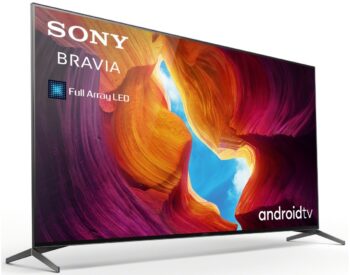
The Sony KD65XH9505 is a 65-inch 4K TV with a stunning HDR experience. It has impressive precision and motion management. However, we regret the very limited viewing angles.
1 032 £ on BoulangerThe Sony KD65XH9505 is among Sony's flagship 4K TVs today. This 65-inch TV is packed with technologies only seen on high-end models and offers dazzling visuals, including Direct LED Backlighting with Local Dimming, Sony's most powerful X1 Ultimate processor, all-new multi-audio system... All integrated in an attractive and elegant design.
Clearly, you'll get the most out of the Sony KD65XH9505 TV thanks to 4K content with native HDR with excellent color reproduction. With Dolby Vision, HDR10 and HLG all supported, you should have plenty of options to choose from in terms of content, even if HDR10+ is not supported here.
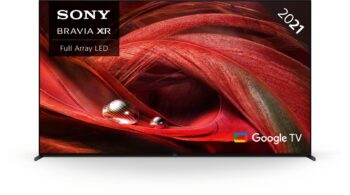
The Sony XR75X95J is the best non-OLED offering from the Japanese giant. It offers a stunning HDR experience, with impressive color accuracy and motion handling.
2 392 £ on BoulangerThe Sony X95J range replaces the X900H range. Thus, the Sony XR75X95J inherits the same features as its predecessors. It has a VA panel with an outstanding contrast ratio and a full local dimming function that further improves the black level. It displays good reflection management and gets very bright to combat glare, but its viewing angles are quite narrow, not the best fit if you have a wide sofa.
The Sony XR75X95J a good response time, low input lag and a 120 Hz refresh rate, a great choice for gaming. However, the variable refresh rate (VRR) support announced by Sony is not yet available. Unfortunately, while it has good color gamut, it's not technically considered wide gamut for HDR. That said, it still offers a very good HDR experience. Like other Sony 2021 TVs, it runs on Google TV, with tons of apps.

The KE85XH9096 is part of the Sony XH90 series. These TVs feature some of the latest technology supporting all HDR formats, including HDR10, HLG and Dolby Vision, comparable to HDR1000 and HDR1500 standards.
2 232 £ on BoulangerAny specific needs?
Your guide :
Rate this buying guide :By rating this buying guide, you are helping us to reward our best writers. Thank you!
| The best | 55 inches | 65 inches | 75 inches | 85 inches | |

In accordance with our commitment, this buying guide does not contain any sponsored products. |
 9/10 |
 8/10 |
 8/10 |
 8/10 |
 8/10 |
| OUR SELECTION |
Sony Bravia XR-55A90J
|
Sony Bravia XR-55A80J
|
Sony KD65XH9505
|
Sony XR75X95J
|
Sony KE85XH9096
|
|
A perfectly calibrated image supported by infinite contrast thanks to the OLED screen technology: this 55-inch TV from Sony is flawless in terms of resolution, sound and ergonomics.
|
Almost as good as the impressive XR-55A90J, the Sony XR-55A80J is a much more affordable 55-inch OLED TV. It displays crisp, perfectly detailed images, and handles motion very well.
|
The Sony KD65XH9505 is a 65-inch 4K TV with a stunning HDR experience. It has impressive precision and motion management. However, we regret the very limited viewing angles.
|
The Sony XR75X95J is the best non-OLED offering from the Japanese giant. It offers a stunning HDR experience, with impressive color accuracy and motion handling.
|
The KE85XH9096 is part of the Sony XH90 series. These TVs feature some of the latest technology supporting all HDR formats, including HDR10, HLG and Dolby Vision, comparable to HDR1000 and HDR1500 standards.
|
|
|
Display technology
|
OLED
|
OLED
|
Full LED
|
Full LED
|
Full LED
|
|
Repairability index
|
6.6/10
|
6.6/10
|
6.1/10
|
6.6/10
|
6.1/10
|
|
HDR supported
|
HDR10, HLG, Dolby Vision
|
HDR10, Dolby Vision
|
HDR10, Dolby Vision
|
HDR10, HLG
|
HDR10, HLG
|
|
Refresh rate
|
100 Hz
|
100 Hz (4K)/120 Hz (FullHD)
|
100 Hz (4K)/120 Hz (FullHD)
|
100 Hz
|
100 Hz
|
|
HDMI ports
|
2 HDMI 2.0 ports and 2 HDMI 2.1 ports
|
4 HDMI 2.0 ports
|
4 HDMI 2.0 ports
|
2 HDMI 2.1 ports / 2 HDMI 2.0 ports
|
2 HDMI 2.0 ports and 2 HDMI 2.1 ports
|
Help us improve this table:
Report an error, request the addition of a feature to the table, or suggest another product. Thank you for your kindness!
We spend thousands of hours each year studying the major specialized websites, analyzing products of hundreds of brands and reading user feedback to advise you on the best products.
We are a product review company with a single mission: to simplify your buying decisions. Our research and testing helps millions of people every year find the best products for their personal needs and budget.
To support us you can: use our links to make your purchases (which often earns us a small commission), share our articles on social networks, or recommend our site on your blog. Thanks in advance for your support!

Sony makes TVs ranging from 40 inches to 85 inches. Most Sony TVs now have native 4K resolution. 4k has quickly become the standard in the consumer entertainment industry. Sony does make some 8K TVs, but they are still very prohibitively expensive. In addition, there is still very little native 8K content.
Sony introduced its first OLED Smart TV under the BRAVIA brand, named A1E in January 2017 with an X1 Extreme processor. Its successor, the A8F, was introduced by Sony at CES 2018. At IFA 2018, the A9F with an X1 Ultimate processor was unveiled. In 2019, Sony introduced the new 4K OLED models, A8G and Master Series A9G, followed by the A8H in 2020. For 2021, Sony offered the world's first cognitive intelligence TVs with its latest XR AI cognitive processor found on the new A80J and Master Series A90J.
Sony TVs feature one of two screen technologies: Full Matrix LED (Full LED) or OLED. LED screens are quite common. The pixels of these screens are illuminated from behind, a process also known as local dimming.
While LED displays create vivid colors, they tend not to display deep blacks or strong enough contrast between darker shades. Sony uses various innovative technologies to improve and solve this problem, making its Full LED TVs far superior, in terms of image quality, to those of "low cost" brands such as TCL, which nevertheless has TVs equipped with mini-LED or QLED panels.
On an OLED panel, the pixels are individually lit, which means they can turn on and off depending on the content. These screens provide true blacks and impressive contrast. Conversely, they can struggle to achieve the brightness of a high-end LED display. Similar to compensating for LED problems, Sony uses various innovations, including Triluminos technology, to increase color and brightness.
If we summarize, Sony TVs offer vibrant colors and stunning brightness. The integration of artificial intelligence will allow high-end Sony TVs to optimize content for the best possible display. Sony TVs are among the most expensive on the market, especially OLED models. These become almost prohibitively expensive as the size and resolution increase. For example, a 75-inch Sony 8K TV flirts with 6,000 euros.
But at the end of the day, when you buy a Sony TV, you know you're still getting a high-quality product from a trusted manufacturer.
This means that Sony TVs may be more expensive than lesser known brands, but we think it's worth spending a little more on a Sony TV, because you want something that will last a long time, not to mention the importance of the extra features that all of Sony's expertise will bring to you.
If you regularly watch 4K content, a Sony TV will give you a viewing experience that is second to none.
In the world of TVs, Sony is the pioneer of premium TVs. In fact, the brand has been making high-end TVs since the late 1960s. And that experience shows in the highly refined Bravia TVs they sell and the excellent performance of these TVs overall. Sony also offers the best sound you can get on any TV, thanks to technologies like Acoustic Surface Audio+, which uses the glass of an OLED TV panel to create dialogue and sound effects, offering incredible realism.
Sony TVs use Android TV and Google TV software to meet all your Smart TV needs. The Google app ecosystem is extensive and the Android platform offers deeper smart home integration and better voice interaction than any other Smart TV software.
The only problem we have with Sony's great TVs is the price, which is still higher than the competition.
Samsung TVs are available in a wide range of sizes, most with 4K resolution. In recent years, Samsung has stood out by launching QLED or Quantum Dot LED TVs. Recall that this technology works like LED, but the pixel backlights pass through a quantum filter to increase color and brightness. The result is a beautiful and bright screen, but we find the same problem as with LED: the colors are a bit dull.
Samsung's Smart TV platform, Tizen, is fast and intuitive. It serves as a hub for all streaming services and applications. Samsung also makes "Artful TVs" with stunning screens that can also serve as modern pieces of interior design.
The best Samsung TVs are also very expensive, but there are many older models with high-end technologies offered at very affordable prices. In fact, the price of QLED TVs has dropped considerably in recent years.
Sony and Samsung offer a fantastic range of consumer TVs and high-end models for those who want the best picture and sound quality possible. There's very little difference between the two so the decision depends on what features appeal to you most. And your budget, of course.
If you want the ultimate picture quality, we think OLED tends to offer the best overall picture performance. And given that a number of Sony's best TVs use OLED technology and support Dolby Vision, Sony has a slight advantage here. That said, some of Samsung's QLED displays offer excellent value and impressive picture quality, in addition to the full experience offered by the Tizen operating system.
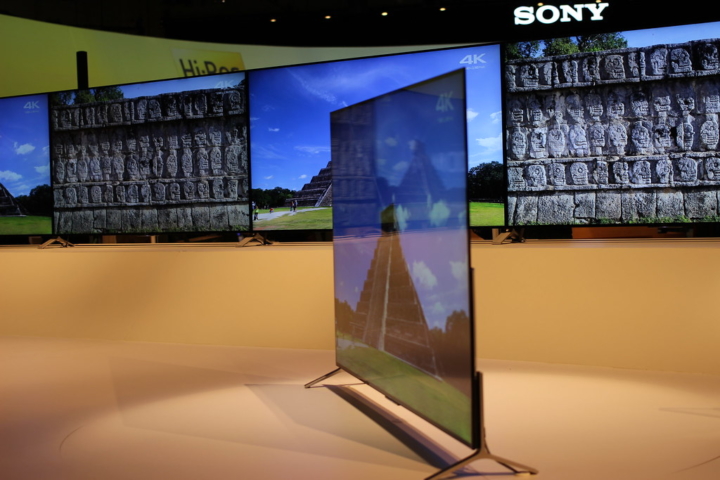
There are two types of screens available on Sony TVs: OLED and Full LED, each with its own unique features. TVs with OLED panels include over 8 million self-illuminating pixels that are individually controlled with the utmost precision. My variance between light and dark is dramatically improved with incredibly deep blacks and dazzling lights. In other words, you'll see sharper detail in dark scenes.
Sony Full LED TVs fill the screen with brightness, allowing the TV to reproduce colorful scenes even in very bright rooms. All Sony Full LED TV models feature X-tended Dynamic Range™ PRO technology, a unique Sony technology that enhances light and dark.
There are important considerations when choosing the ideal size for your Sony TV. You need to select the right TV for your needs and know how to maximize its size. Don't think you need a large room to consider a very large screen. First, viewing distance is important. As a rule of thumb, the height of the TV should be two-thirds of the distance between the TV and where you will sit to watch.
Thus, for a 55-inch TV, the viewing distance should be 100 cm, while for a 75-inch TV, the ideal viewing distance will rise to 160 cm.
Sony TVs are mainly offered with either an OLED panel or a Full LED panel. Each one having particular characteristics to retranscribe the image.
OLED TVs are particularly suitable for science fiction, horror and action movies, as OLED technology enhances the intensity of light and darkness. Also, because OLED TVs have millions of independently lit pixels, you'll get extraordinary sharpness and minimal motion blur; this makes them particularly suitable for fast-paced sports like soccer and auto racing.
Sony Full LED TVs feature Sony's unique XR contrast enhancer. This is a technology that makes images more lifelike by independently activating the backlight and increasing the brightness of lighter areas. This makes the LCD TV a good choice if you like to watch movies with lots of light, sunny scenes like family movies and animated films.
And if you regularly use your Sony TV for gaming with your Xbox Series (X or S) or PS5, opt for a Sony TV with Bravia XR technology.
If you're looking for a truly immersive sound experience, focus on technologies that pair sound well with the picture. Sony OLED and Full LED TVs use different technologies to reproduce sound. On OLED TVs, Sony uses Acoustic Audio technology.
This technology allows you to precisely obtain the source of the sound according to what is happening on the screen. It precisely matches images to sound so you can hear voices and sounds where they are emitted in the scene on the screen. On Full LED TVs, this is the Acoustic Multi Audio technology that Sony uses.
This may be an afterthought, but pay attention to the number of HDMI inputs on a Sony TV. The standard on the best Sony TVs is to offer four HDMI ports. That's more than enough to connect your Blu-ray player, game console, satellite set-top box, and home theater all at the same time without having to unplug one device to connect another.
If you've decided to take the plunge and get a Sony 4K TV, make sure the TV's ports at least support HDMI 2.0 to accommodate future UHD sources. In fact, HDMI 2.0 is the bare minimum on the latest Sony TVs. The new HDMI 2.1 format is already present on some Sony TVs.

OLED (Organic Light Emitting Diodes) is a new technology that produces brighter, more efficient, thinner, faster, and better-looking displays. OLED panels offer better refresh rates and contrast than LCD or Plasma displays. Sony has been involved in OLED research, development and production for years and launched the world's first OLED TV in 2007. Today, Sony produces OLED TVs - using panels produced by LG Display.
Sony's OLED panels are a compendium of technologies, starting with TRIMASTER™ technology. This is a design architecture used to achieve the highest level of color accuracy, precision imaging and image quality consistency. TRIMASTER™ is based on Sony's EL (Electro-Luminescence) device. It is a self-emitting display technology with wide dynamic range and high image quality.
TRIMASTER™ also uses Super Top Emission technology, which is in the form of a micro-cavity structure that incorporates color filters. Each RGB color has a wavelength TRIMASTER™ also uses Super Top Emission technology which comes in the form of a micro-cavity structure that incorporates color filters. Each RGB color has a different wavelength.
Sony's micro-cavity structure provides different emission layer thicknesses corresponding to the wavelength of each RGB color. The micro-cavity structure uses an optical resonance effect to improve color purity and enhance light emission efficiency. Our Super Top Emission technology not only provides a wide color gamut with the purity of the three primary colors, but also maintains this wide color gamut throughout the luminance range.
Super Top Emission technology not only provides a wide color gamut with the purity of the three primary colors, but also maintains that wide color gamut throughout the luminance range.
The Sony TRIMASTER™ EL OLED panel offers an advanced viewing angle compared to other OLED TVs on the market. This allows, for example, video engineers or designers to properly view the display from many different angles and facilitates more efficient content creation activities.
In recent years, Sony has released several mobile devices that have adopted OLED displays. The PS Vita handheld console is one example. Sony has sold more than 2 million PS Vita units. The Vita featured a 5-inch Samsung touchscreen OLED display, but Sony switched to an LCD display in the new Vita because they wanted to reduce the cost of the device. In October 2016, Sony launched its PlayStation VR HMD. Sony's VR HMD uses a 5.7-inch AMOLED FHD (1920x1080) display (produced by Samsung Display). Sony also produces OLED microdisplays (0.5 inches with a resolution of 1024 x 768 pixels) and offers several such displays on the market.
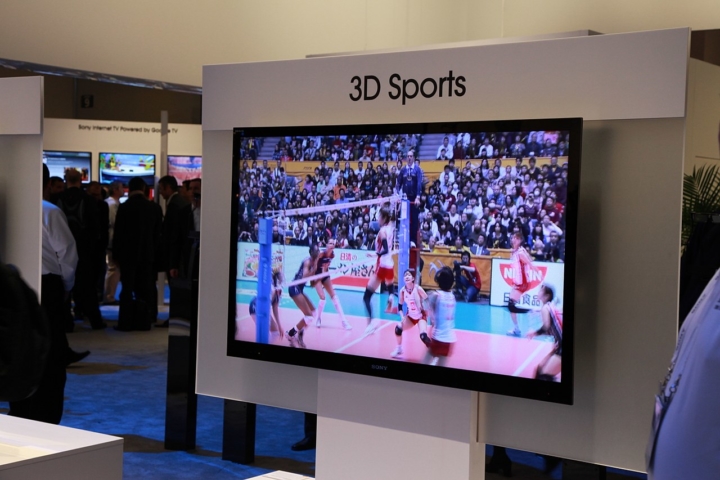
1. Excellent picture quality
From the beginning, Sony was one of the most popular TV brands. Before the LED and OLED era, Sony had TVs with the best display and color accuracy, making them easily the best on the market. After the introduction of Full LED and OLED technologies, Sony TVs have a more vibrant display than any of its competitors.
2. Excellent sound quality
Sony TVs come with unique and advanced sound technologies. This makes sense since Sony is also a market leader in consumer and professional audio. Sony OLED TVs offer cinema-quality sound directly from the TV screen, thanks in particular to the Dolby audio system.
And don't forget that Sony has other tricks up its sleeve, such as the HT-A7000 soundbar or the SRS-NS7 around-the-neck speaker with 360° spatial sound. These products are fully compatible with the technologies present on your Sony TV and offer a nice immersion.
3. Modern connectors
Unlike other famous brands, Sony has always been in the know when it comes to technological innovation. So it's not surprising to see their models equipped with good modern connectivity like HDMi 2.0 or 2.1 and Bluetooth. Moreover, to be in line with smartphones, Sony TVs have Chromecast or Apple AirPlay compatibility. All in all, Sony TVs are true entertainment centers for the family.
4. A beautiful fluidity
Sony is also known as the pioneer of motion blur mitigation and refresh rate improvement features. As a result, Sony TVs are among the best TVs for console gaming, thanks in part to excellent response time and a black frame insertion feature to help reduce motion blur.
5. Low power consumption
Sony TVs use 20-30% less power than other brands. They also have a power-saving mode that allows you to use as little power as possible. You can also adjust the brightness of the TV according to your environment rather than having a constant static brightness, this feature can help to easily reduce power consumption.
We believe these are the best alternative brands to the Sony TV:
Samsung is the global leader in the TV market with its large catalog of 4K and 8K Smart TVs, also covering a wide price range. One of the brand's distinguishing features is the excellent quality of its QLED panel used in most of their recent TV models.
The LG brand is a well-known and now respected TV brand, as it is the pioneer of OLED technology on modern TVs. Overall, LG has a reputation for making high quality TVs with excellent picture quality. Compared to Sony and Samsung, LG TVs are cheaper.
If there's one brand that gives you the most bang for your buck, it's TCL. A relative newcomer to the Western market, TCL has become one of the biggest TV brands, and for good reason. TCL TVs offer high-end technologies such as mini-LED and QLED at affordable prices. In addition, TCL also offers the best Roku TVs on the market.
Once known for making well-made home appliances like air conditioners, Hisense has become a very good TV manufacturer and one of the most affordable TV brands on the market. Depending on the model, Hisense offers both Roku and Android TV options. Hisense has also adopted QLED technology on the best TVs in its catalog.
Vizio's early forays into the Smart market were hampered by a lack of many features and a severe limitation on the Smart TV experience. But the most recent Vizio TVs have raised the bar considerably, offering excellent features and extensive Smart TV capabilities. But what Vizio consistently offers is quality at a low price, just like their OLED TVs.
Keep your Android TV up to date
Updating your Sony TV to the latest version of Android TV will not only give you the best TV experience, it will also protect you with the latest security patches, let you enjoy new features and capabilities, and even get improved interfaces and menus.
Use Google Play to install apps
Since Sony uses Android TV, Google Play is already present at first startup, just like it is on an Android smartphone. There you'll find a wide selection of apps to download. Don't use other sites to install apps.
Choose the right picture mode
When setting up your Sony TV, it's important to choose the right picture mode, which will automatically adjust several aspects of your TV's image. When you start up a modern Sony TV for the first time, for example, you will be asked to choose the picture mode. Of course, it will be possible to change it later.
Avoid touching the sharpness setting
The sharpness control doesn't actually increase sharpness, it increases the quality of pixels at the edges, which obscures fine details and makes the picture look intensely artificial. A TV with high sharpness may display images that look sharper, but it will miss the most natural, fine details you'd see with sharpness set to zero.
Adjust the backlight or OLED light
If your eyes hurt after watching a movie at night, or if you're having trouble seeing the action at an afternoon soccer game, you'll probably need to adjust the TV's backlight or OLED lighting level to match the lighting conditions in your room. Sony OLED TVs don't have backlights, as each pixel creates its own light.
However, you can control the intensity of these pixels using the OLED light control in "Settings".
To mount your Sony Bravia TV on the wall, follow these 4 steps:
For product protection and safety reasons, it is strongly recommended that the wall installation of your Sony TV be performed by a qualified professional. However, if you have time and some DIY skills, you'll have to do it yourself.
Since Sony TVsrun on Google TV or Android TV, you already have the entire suite of basic Google applications pre-installed. But you can still download more from the Google Play platform. An Internet connection and a Google account are required to install applications. If you don't have a Google account or want to create a shared account, create a new account by accessing the Google homepage from your Sony TV.
To update the Sony TV software, you must first turn on your TV and connect it to Wi-Fi. Select "Settings" or the gear icon to open the settings menu. Select "Preferences", "About" and then "System Software Update". Select "Software Update" again to search for an available software update. Confirm the software update if it is available. If not, your TV will tell you that your software is up to date. Enable "Automatically check for updates" so that your Sony TV will send you a notification whenever a Sony TV software update is available.
Setting up your new Sony TV is not difficult. In fact, it starts the moment you turn on the TV for the first time. Although Sony's version of Android TV guides you through the setup process, it's always helpful to know what you're getting into ahead of time before diving in head first. First, you'll need to connect the TV to your home Internet network. It may take a while for the TV to finish establishing a connection. Then you must accept the privacy policy once the connection is established.
Next, the setup process will guide you through setting up your antenna and searching for channels, but if you don't have an antenna, your first setup is complete. The preliminary configuration is finished.
Every month we help more than 1 000 000 people buy better and smarter.
Copyright © 2022 - Made with ♥ by buyingbetter.co.uk
Your reviews and buying guides 0% advertising, 100% independent!